Information/Write-up
Word of Mouth – The story of Merryweather
By Nick Warburton
The mid-to-late 1960s California rock landscape was littered with Canadian expatriates jostling for a record deal and the allure of fame and fortune. One of the earliest to arrive on the West Coast was singer Denny Doherty, a founding member of the internationally renowned folk-rock aggregation, The Mamas & The Papas, in August 1965.
Not long after Doherty’s arrival in L.A., former Mynah Birds members, Neil Young and Bruce Palmer pitched up on Sunset Strip in a hearse they’d driven all the way from Toronto and the legendary Buffalo Springfield was born. Less than a year later, another ex-Mynah Birds member, Goldy McJohn arrived in L.A with his band, The Sparrow. Struggling for a year to make any headway, the group became overnight sensations after eschewing a change in name and personnel and emerging as heavy rock band, Steppenwolf.
By the end of the decade, Canadian musicians were arriving in droves and could be found plying a trade in such notable bands as Janis Joplin’s Full Tilt Boogie Band, Elektra Records’ Rhinoceros and Canada’s finest export, The Band, who cut their legendary second album in L.A.
One of the lesser known Canadian groups to work on the West Coast was the short-lived Merryweather, a talented bunch of Ontario musicians, fronted by another former Mynah Birds member, bass player Neil Lillie (today better known as Neil Merryweather).
Slightly reminiscent of the early Steve Miller Band, Merryweather also shared the same label, Capitol Records, with whom they had signed with in January 1969 and produced two albums, including the double “super-jam” record, Word of Mouth before imploding later that year.
Unlike many of their Canadian contemporaries based in California at the time, Merryweather never found the success they warranted. Along the way, however, the band produced some great music and, as we’ll see later, could have gone a lot further had events worked out differently.
The story begins in Toronto in 1963 with a suburban group known as The XLs. Formed by organist Ed Roth (b. 16 February 1947, Toronto, Ontario) with bass player Brian Hughes, and later joined by drummer Bob Ablack and American-born guitarist Bill Ross, The XLs were essentially an instrumentals outfit. That is until singer Gary Muir came on board during early 1964 and remodelled them as Gary & The Reflections.
If Gary Muir had any long-term plans for the group they were soon dashed, however, as a few months later singer Neil Lillie (b. Robert Neilson Lillie, 27 December 1945, Winnipeg, Manitoba) had ousted him as front man. Lead singer with local rivals, Night-tricks, Lillie’s band shared the same agents as Gary & The Reflections. “I went to one of their rehearsals and Gary wasn’t there,” remembers Lillie from his home in Los Angeles. “We ran through about 25 songs. We jammed and I sang and that was it.”
With the change in personnel came a new identify, The Ookpiks, named after a native-designed stuffed toy owl called Ookpik, which the Canadian government was promoting at the time.
Unfortunately, as Canadian rock journalist Bill Munson points out, another Ookpiks group already existed and so for a brief period, the group took on another moniker, The Sikusis, named after another stuffed toy. Once again, though, the band found itself in trouble. Unable to get permission from the Canadian government to use the name without compensation, the musicians settled on The Just Us at the end of 1964.
While all of this was going on the musicians scored a recording deal with Quality Records and a lone single, “I Don’t Love You” c/w “I Can Tell” was launched on an unsuspecting public in early 1965. Despite its raw energy and undoubted appeal, the single bombed, which is perhaps not surprising in light of the fact that some copies were credited to The Ookpiks, some to The Sikusis and some to The Just Us! Almost impossible to get hold of now, the single’s a-side, “I Don’t Love You” has resurfaced on at least one CD compilation – Nightmares From The Underworld.
Soon afterwards, drummer Bob Ablack briefly left for personal reasons. Al Morrison took up the drum stool before making way for Ted Sherrill, who would fill in for Ablack intermittently over the next few years.
The Just Us ploughed on but Neil Lillie (who had been using the stage name Bobby Neilson) and Bill Ross were increasingly coming to blows and around December 1965 Ross was given the elbow. Ross’s dramatic ousting coincided with original member Brian Hughes’ decision to quit the band and continue his studies. Bill Ross, meanwhile, reunited with Al Morrison in The Bossmen, which was formed in January 1966 to back up future Blood, Sweat & Tears singer David Clayton-Thomas after he left The Shays.
To fill the vacant spots, Lillie brought in former Mynah Birds singer, the late Jimmy Livingstone (b. 28 February 1938, Nova Scotia), initially as a second keyboard player and vocalist. “I befriended Livingstone at Long and McQuade’s music store where he worked in the back room as an amp and guitar repairman,” remembers Lillie. “I liked his personality so I asked him to join. He played keyboard, so we put another one on the other end of the stage and he would play that when I did all the lead singing. We were also a duet. We were like The Righteous Brothers.”
Livingstone by all accounts was a wildly eccentric man. A somewhat mercurial character, he’s often been described by musicians that knew him as being “ahead of his time” and his musical talents were greatly respected.
“Jim was incredibly funny and musically fearless,” remembers Roth. “We did arrangements that were totally unique and often off the cuff. He was one of my greatest musical influences. He would do anything on stage. Sometimes we would break into an opera in a totally made-up language. Sometimes, the jams went on and on, but most of the time they were fascinating and pretty funky. We were a band that could turn on a dime.”
Livingstone had started singing in the late 1950s rockabilly outfit, Jimmy Lee & The Countdowns. Much later on he shared the vocal duties with future Motown funk star, Rick James (then known as Ricky James Matthews) in the early Mynah Birds. After splitting from that group in mid-1965, Livingstone briefly fronted The Muddy Yorks alongside bass player Wayne Davis (b. 28 April 1946, Toronto, Ontario). This connection probably explains how Davis was recruited as Brian Hughes’ replacement in The Just Us in early 1966. And if this was indeed the case, it was probably Davis who found Ross’s successor, guitarist Stan Endersby (b. 17 July 1947, Lachine, Quebec) as both musicians had previously worked together in C J Feeney & The Spellbinders.
“I was just joining the union at that time and they were already signed with the Big Land Agency,” remembers Endersby, who later played with Peter Quaife’s post-Kinks band, Mapleoak. “We were essentially a pop/R&B band, and we played all the R&B clubs in the Yorkville Village. At first we played mostly covers but we gradually brought in original material.”
With Bob Ablack back in The Just Us’ ranks, the band met an English producer that used to work for the BBC TV programme, Top of the Pops. Impressed by The Just Us, he secured some studio time at Arc Sound in the spring of 1966 and oversaw the recording of an entire album, the tapes of which later disappeared when the producer took off for New York.
Not withstanding this disappointment, the old battle over the group’s name soon reared its ugly head again when an American duo called The Just Us scored a minor US hit with “You Can’t Grow Peaches On A Cherry Tree” in April 1966.
“Apparently the original producer, the guy who did the single on Quality, went to the States and thought the band had broken up and he used the name for this American group,” explains Endersby. “They released this single and everybody thought it was us. We had to change our name immediately because we were doing music that was nothing like that. Our fans knew it wasn’t us but the radio stations didn’t.”
If the struggle for the band’s name wasn’t bad enough, Wayne Davis left the band during early June to join Bobby Kris & The Imperials. With a prestigious show opening for The Byrds at Toronto’s Varsity Stadium pencilled in for 22 June, Lillie had little choice but to learn the bass in two weeks!
“One day, all of a sudden, I found out through other people that Wayne Davis was quitting the band to go with Bobby Kris & The Imperials for 50 dollars more or something,” explains Lillie. “I was really angry and I walked into the Night Owl, which was the hub of activity back then. Wayne comes out the back hallway and right in front of the stage I gave him a shot. It was the only time I ever punched anybody I was so mad. I popped him right in the stage lights.”
Lillie says the Night Owl’s English manager then took him backstage and gave him a pep talk. “He told me that, after watching everything and knowing me, ‘You just pick up the bass. I know you can do it.’ He convinced me to do that.”
Assuming the name Group Therapy for the show, the band once again ran into legal problems. “Some lawyer stopped us from using that name,” says Endersby. “I believe his kid was playing in some non-union band in Scarborough and they were called Group Therapy.”
It didn’t matter in the long run. Aware of the changing undercurrent in the local music scene and the dawn of the psychedelic era, the group eventually assumed a more appropriate moniker in September 1966, and one that fitted perfectly with the times – The Tripp. “I came up with that name and I even designed the red suits that we wore that became popular with the fans,” recalls Lillie.
In its new guise, the group eschewed the R&B numbers to concentrate more on original material, which was far more improvisational and experimental in style. Early on, the band shared a bill with Richie Knight & The Mid-Knights and impressed by the pianist, the late Rick Bell, Lillie asked him to join The Tripp.
The new line up played numerous gigs all over Toronto and the southern Ontario circuit. “I remember we played at a university gig in St Catherine’s and were racing back to play the two-day Toronto sound show at Maple Leaf Gardens [on 24 September] and we blew our truck engine and missed the first show,” says Lillie. “We made the second show and there was a near riot of screaming girls and at that point, I knew we had arrived.”
“Another big gig that we did was at the Club Kingsway [on 9 October] where we opened for Mandala, we were at our peak,” continues Lillie. “We were so good, we blew Mandala away and their manager, Rafael Markowitz became our manager.”
Rare footage of The Tripp appearing on the Canadian Broadcasting Company’s The Sunday Show has resurfaced in recent years and is something of a revelation. Presented by Canadian singer/songwriter Ian Tyson, The Tripp can be seen tearing through a bizarre improvisational number, which clearly leaves the rather conservative studio audience looking dumbfounded and noticeably shocked!
“They put a lot of money into filming our psychedelic numbers with lots of effects and lights and smoke machines,” remembers Endersby. “There was an article that said something like ‘the singer screams, howls like a chicken and never sings a word’. I mean Jimmy Livingstone was very original, one of a kind. On the show Rick Bell would be inside his piano pulling at the strings and I was playing slide with a lipstick tube. It was all very bizarre.”
Perhaps it was the band’s uncompromising attitude and unwillingness to fall in line with the current music fads or maybe it was just that Canada’s fledging music industry simply didn’t know how to market the band’s adventurous spirit. Whatever the reason, The Tripp sadly never got the opportunity to record anything for posterity.
By the spring of 1967, Rick Bell was gone. Joining forces with Ronnie Hawkins & The Hawks, he would resurface a few years later in Janis Joplin’s Full Tilt Boogie Band, appearing on the troubled singer’s classic Pearl album. After years playing a multitude of sessions, Bell would ultimately wind up with Hawkins’ former backing group, The Band.
Neil Lillie was losing interest too and when former Mynah Birds singer Ricky James Matthews turned up at one of The Tripp’s shows in late May and offered him a potentially lucrative offer, he didn’t need much convincing. “After the show, Rick asked me if I wanted to sign to Motown as a member of The ‘Myna Byrds’ that he was reforming,” remembers Lillie. “Billy Ross was there and was joining with Al Morrison.”
Perhaps Lillie should have seen the warning signs from the outset. The fact that the reformed group’s guitarist was his old adversary from the original Just Us probably should have set alarm bells ringing. Then there was Matthews’ habit of running into trouble with the law. As it turned out, The “Myna Byrds” fell apart as quickly as they had been reformed. By September 1967, Lillie was playing bass and singing with a new Toronto band called The Flying Circus, fronted by none other than folk singer/songwriter and guitarist Bruce Cockburn.
Lillie stuck with The Flying Circus until March 1968 but eventually left over “creative differences” with Cockburn. Intent on finding an outlet for the new material he was writing, Lillie started to look around for suitable partners. Within a matter of weeks, he had reunited with his former cohorts from The Tripp – Ed Roth and Jimmy Livingstone, both of whom had kept the old group going under the guise of Livingstone’s Tripp and then Livingstone’s Journey.
While Roth had stuck with the band to the bitter end, Livingstone had left unexpectedly in October 1967 and after a brief respite had dabbled unsuccessfully with a new group called The Boiler Room. When that didn’t work out, Livingstone ran into drummer Gary Hall (b. 6 October 1946, Toronto, Ontario; d. 4 December 2010), who was teaching percussion at the Toronto Conservatory.
“I had a student named Norman Kelp, a drummer from New Brunswick and his friend was [guitarist] David Kindred,” recalls Hall. “David and I became friends and he moved in with me and my family. We thought we’d better put a band together, were looking for somebody and I think he knew Jimmy Livingstone.”
Livingstone was already hanging out with Neil Lillie who was looking to put together a new group. Having recruited Ed Roth, who was looking around for fresh challenges after Livingstone’s Journey had dissolved, the trio approached Hall and Kindred but the line up was short-lived. During June 1968, Kindred moved on to replace Mike McKenna in the legendary, Ugly Ducklings.
The band scouted for a suitable replacement and initially auditioned a very young guitarist called Danny Marks, who was playing with a local group called Edward Bear. “He was a real nice guy but he went in a different direction to us,” points out Lillie.
It was then that the Ducks’ singer Dave Bingham directed the group to the guitarist they were looking for, 19-year-old David Colin Burt (b. 19 September 1948, Hamilton, Ontario), formerly a member of Hamilton groups, The Roots of All Evil and The Incredible Sons of Dr Funk. Burt, who was currently playing with St Catherine’s band, The Fraser Loveman Group, had already tried out for the lead guitar spot in the Ducks before Kindred but turned the offer down. “I went and did some rehearsals with them and I just felt like the band was on its way out, so I bowed out,” he recalls.
Sticking with his current outfit, Burt remembers playing at a school gymnasium somewhere between Toronto and Hamilton one night when the others, on Bingham’s recommendation, dropped by to check the young guitarist out. “I saw the whole band standing out there on the dance floor and on the break they said, ‘Do you want to go to California with us?’”
The decision to try their luck in Los Angeles came about after Lillie and Livingstone had run into former Buffalo Springfield bass player Bruce Palmer at his brother’s house in Toronto. Palmer, who had recently been busted for marijuana possession and deported to Canada “put this whole picture of California in our heads,” explains Lillie. “After hearing Bruce’s stories of how great L.A. was, I decided to form a band specifically to go to California, not to play locally.”
Within days of signing up, Dave Burt found himself rehearsing with the group, which was tentatively called New King Boiler (after the brand name inscribed on the furnace) in Neil Lillie’s grandmother’s basement. It soon became apparent that Gary Hall was a prodigious coffee drinker and such was his habit that Lillie’s grandmother nicknamed him “Coffee”. The band picked up on it and from then on Gary Hall became known as ‘Coffi’ Hall.
A short while later, the group befriended June Nelson. “While hanging out at Bruce’s brother’s place, we met June who was sort of his girlfriend at the time,” recalls Lillie. “She had been Mo Osten’s secretary [at Warner Brothers in Los Angeles] before coming to Toronto.”
Nelson had written a poem called Heather Merryweather and, taken with the title, the musicians decided to adopt it as the band’s new name. Nelson also promised to help make arrangements for the group once they got to Los Angeles that summer.
Before setting off in early August, Heather Merryweather went into Arc Studios in Toronto and recorded three tracks. The first, a co-write by Lillie and Livingstone, “Little Man” would resurface on the band’s debut album the following year, albeit in a different form. The remaining tracks, however, were never recorded again and remain unreleased to this day. One is the June Nelson poem, “Heather Merryweather”, put to music by the group, while the other is Lillie’s “Foolish I Guess”.
With the recordings done, the entire group, plus Gary Hall’s brother, jumped in an old Chevy and drove non-stop to Los Angeles in about three days. With no instruments and armed only with an acetate of the three songs, the group had a rude awakening after finally reaching their destination. “When we got there we found out that June [Nelson] didn’t have any preparations for us,” recalls Burt.
With little money, Heather Merryweather had to depend on the kindness of strangers to get by. “At first we lived in a motel called the Hollywood Center,” remembers Roth. “One week in, some guy tried to commit suicide there by filling his cottage with gas from the stove and lighting it. He survived somehow. I’ll never forget coming home to the motel and seeing all the venetian blinds blown out of the windows.”
Despite this early setback, Heather Merryweather soon ran into Bruce Dumas, a producer at A&M Records who expressed an interest in recording them after hearing the acetate. When Dumas asked how much they would sign to A&M for, Roth recalls that they insisted on at least $50,000. The producer was unsure he could guarantee it but said he would try and strike a deal. “Unfortunately, A&M had just signed Lee Michaels, so he couldn’t sign us,” explains Roth. “But he turned us on to Bob Krasnow who was starting Blue Thumb Records. We had a meeting in his car [but] he had just released Captain Beefheart, so I don’t think he had [any] money.”
Neil Lillie remembers the A&M connection somewhat differently. “I don’t remember Dumas. That could have been his name but there was an English guy that worked for Tetragrammaton Records as an engineer. We ran into him in Topanga and he took our three-song demo and he remixed it to bring the vocals up so we had a better demo and somehow that demo got to A&M.”
While nothing seemed to come of either deal, June Nelson had established contact with her old boss, Mo Osten at Warner Brothers. Things looked promising at first but once again nothing tangible emerged from the negotiations. Lillie then contacted Bruce Palmer who put the group in touch with a local singer/songwriter called Linda Stevens and she put the entire band up at her place in Topanga Canyon, where blues singer Taj Mahal was her neighbour. It was the perfect spot to rehearse.
“While staying there we arranged to have our instruments flown down to L.A. and we got a gig at the Big Pink,” remembers Roth. “Topanga’s main club, the legendary Corral, had been firebombed by right-wing neighbours and so a lot of the Topanga people went to the Big Pink, in the Valley. Members of The Doors and Spirit used to come see us. I think they were fascinated by Jimmy, but we were growing more and more frustrated by the fact that he would not learn lyrics or arrangements.”
Lillie, however, has different recollections of events. “Word spread about the new band from Canada and people showed up to see us at the Big Pink,” he insists. “This was based on musicianship, not because they were curious about Jimmy.”
Debuting at the Big Pink on 22 September, Lillie, who had quit an art school scholarship to pursue music full-time while with The Just Us, designed the poster to promote the show. “That picture was taken in Toronto before we left for Los Angeles,” notes Roth. “Neil thought my hair looked too short and puffed it out with a marker to make it more like an Afro!”
One person who dropped by while the band was playing at the Big Pink and saw real potential in Heather Merryweather was recently transplanted Englishman Chris Huston, formerly a member of Liverpool group, The Undertakers. “[Chris] was interested in recording us at his private studio,” says Roth. “I remember we were invited up to the studio one night to meet his friend, Igor Stravinsky, but our car broke down.”
Missing out on meeting one of the Classical greats was the least of the band’s worries. Increasingly unpredictable, Jimmy Livingstone was given the elbow after the Big Pink shows. “Jimmy disappeared with Linda for a couple of days. I think they went into the bush for a while,” remembers Burt. “Jimmy came back and I don’t know if he was too unstable or whether he just didn’t want to stay with us. He was too much of a free spirit.”
“I vaguely remember a day at the motel when Jim jumped into the pool with his clothes on (for effect) and taking issue with Dave saying ‘whatever’ to some musical point [he] was trying to make,” adds Roth. “I think that was about it for us. Jim’s being in Topanga was disastrous in hindsight. He began having serious hallucinations. [He] was never the same. This was a tragedy for all of us who knew him.”
“It was over,” explains Lillie. “We got together and I said, ‘Look, we can’t get a record deal like this’. The thing was he let us all down. When we played that club everybody heard about us and word spread that we were something to see. So when we did play there, Jimmy wasn’t Jimmy and he wasn’t the guy we wanted to be that he was in the past. It was almost like he got scared. I fired him because he cared more about partying than being part of the band.”
With Livingstone gone, Lillie took over the lead vocal spot and also assumed creative control over the group’s direction. He immediately made an impression on the others. “We didn’t realise he had such a great voice and he could compose like crazy,” recalls Burt. “He would write from the bass so he had all this room. He would be playing all these bass lines and singing all these interesting melodies and Ed Roth and I would put all the harmonic movement to it.”
Shortly before Livingstone’s departure, the band’s luck changed when Morey Alexander, an aspiring manager from Chicago, spotted them, promised to land a record deal and get them a gig at the famed Whisky A Go Go in West Hollywood. According to Roth, the band was impressed that Alexander shared an office with singer Bobby Gentry, but more importantly he gave them money to live on and paid for them to stay at the Hollywood Center.
“We started rehearsing, and when the time had come for our big debut, Morey had arranged to have record people there,” says Roth. “One was Bill Cosby [who] had just started Tetragrammaton Records. Before the gig we went out and bought new shirts and kerchiefs and we hitchhiked to the gig. I’ll never forget us standing on Sunset Boulevard with our thumbs out, guitar, bass, flute and snare drum in hand.”
In early October, Heather Merryweather opened for The Chicago Transit Authority, who were making one of their first L.A. appearances. By all accounts, the band’s performance was well received and in January 1969, producer John Gross signed Heather Merryweather to Capitol Records to a seven-year deal.
Interestingly, it was at this point that Neil Lillie received a phone call from A&M producer Larry Marks, who had somehow got hold of the group’s three-song demo through the aforementioned engineer. “He looked for us for about two months but he couldn’t find out where we were staying,” says Lillie. “He was all bummed because he wanted to sign the band and would have given us what we wanted.”
It didn’t really matter in the short-term because Capitol had promised to support the band and seemed intent on putting the necessary muscle behind the musicians. Dave Burt remembers the label paying to record some demos, which included Lillie’s “Mr Richman” to see how they would come across in the studio.
Cut at Independent Recorders in the Valley with John Gross in the production seat and abetted by legendary engineer Jim Lockert, who “wrote the book” on recording in Nashville and later worked with The Beach Boys, the sessions ran smoothly. Buoyed by the early recordings, Capitol arranged for some studio time to start recording an album, once again working with Gross and Lockert.
The group began recording in earnest and proceeded to lay down 10 tracks, most written by Lillie. “The first sessions for the album were done at Capitol,” remembers Roth. “Wow! It was like a dirigible hangar! I think we did ‘No Passengers Allowed” there. Back then recording was kind of formal – recording staff wore ties. We set up the whole band in the middle of this huge room, and placed mics very high above us on booms. We invited some friends from the coffee house we went to, to come and watch. I think they joined in, in the ‘chant’ at the end of the piece.”
Most of the rest of the album was done back at Independent Recorders where the assistant engineer was Jo Stafford’s son. A former member of The Lettermen, whose brother was a Capitol executive, owned the studio. “The studio was our sandbox,” continues Roth. “We tried everything. In Toronto the most we recorded on was three-track. Here we had eight [and] later sixteen on our next album. We rented strange instruments – a cello, an Ondioline, boom bams, whatever we wanted. Dave and I had never touched a cello, but we played them on the album. It was fun.”
Although Lillie sang the lead vocals on all of the tracks, Burt remembers Jimmy Livingstone turning up in the studio one day unexpectedly and laying down a vocal. “Jimmy rolled in to the studio covered in mud,” recalls Burt. “Apparently, he had been walking down the big viaducts. He came into the studio and I think he sang something. I remember the shock when I saw him because it looked like he’d been on acid for weeks.”
“What we didn’t know about Jimmy back then [in Toronto] was that he was probably borderline schizophrenic,” explains Roth. “Later, in California, after too much acid and such, I’m afraid Jim left our part of the universe for one of his own making.” Roth confirms that Livingstone did come into the studio to record a vocal but says that it wasn’t for the record. It was to help record a dada-esque radio advert for the album that the group’s organist feels turned out better.
Shortly after completing the recordings in February 1969, Neil Lillie legally changed his surname to Merryweather after shortening the group’s name. “Heather Merryweather was dropped because there was no person called Heather Merryweather,” explains Merryweather. “When I said I was in a band called Heather Merryweather, people asked me if Heather was the lead singer! We dropped it because after all, there was already a band called Alice Cooper.”
“Dave, Coffi and I didn’t know Neil had become Merryweather until we saw a proof from the inside of the cover,” recalls Roth on the surprise that awaited the others. “Neil was the driving force behind the band, so I don’t begrudge him the name.”
“The reason I took the name was I never like the name Lillie,” explains Merryweather in his defence. “It always sounded funny to me and kind of bugged me, so I used my first two names – Robert Neilson. When I came down here and I saw that I had to take the reins of the band and that I was doing 90 per cent of the writing and directing everybody, I thought, ‘This time if something goes wrong, I want to make sure that I have some longevity’. When I set up Merryweather Music, Morey and I went to BMI and I got two advances of over $10,000 to support Merryweather during our time together.”
Decked in a double sleeved jacket designed by Ivan Nagy, which showed the band sitting barefooted, the group’s eponymous album arrived in the record stores in late spring but received very little, if any, publicity, other than a brief mention in Billboard magazine in its 17 May edition.
That’s something of a shame because Merryweather was a strong debut and contained some brilliant individual songs, most notably, Neil Merryweather’s “Mr Richman”, which opened proceedings and “No Passenger’s Allowed”. Other highlights include the Merryweather-Burt collaboration, “A Feeling of Freedom” and the aforementioned “Little Man”.
As spring turned to summer, Dave Burt remembers most of the group making a cameo appearance in a Russ Meyer movie called the Seven Minutes where they played a rock band. Roth, who missed the shoot, recalls appearing on the subsequent recording session, produced by Stu Phillips.
Around this time, Merryweather also made a prestigious appearance at Newport ’69, a huge rock festival held at Devonshire Downs in Northridge on the weekend of 20-22 June. The three-day festivities also featured The Jimi Hendrix Experience, Credence Clearwater Revival, The Byrds and Poco among others.
“We opened up on the Sunday morning and it was great,” remembers Neil Merryweather. “I had this guy in the audience that had an American flag with the peace symbol in the middle climb the hundred foot sound speaker towers and put it up at the top and everybody went ballistic. That was a great thing for us.”
Back in Los Angeles, Merryweather returned to the Whisky A Go Go for a show opening for Leslie West’s group, Mountain on 29 July. Earlier that month, work had begun on the band’s second album, which was produced once again by John Gross. On this occasion, Merryweather were joined by various musicians, including Steve Miller, Howard Roberts, Barry Goldberg, Charlie Musselwhite and former Traffic guitarist Dave Mason to record a “super jam” album. As Ed Roth explains, aside from Mason who the band met on the street, the others were introduced to Merryweather on the day of the session in the studio.
Billboard magazine, reviewing the record before its release, gave it thumbs up in its 30 August issue. “Merryweather should break through with this two LP ‘super jam’,” noted the reviewer. “Not only does Neil Musselwhite [sic] have his regular group in this bluesy set but he is joined by su
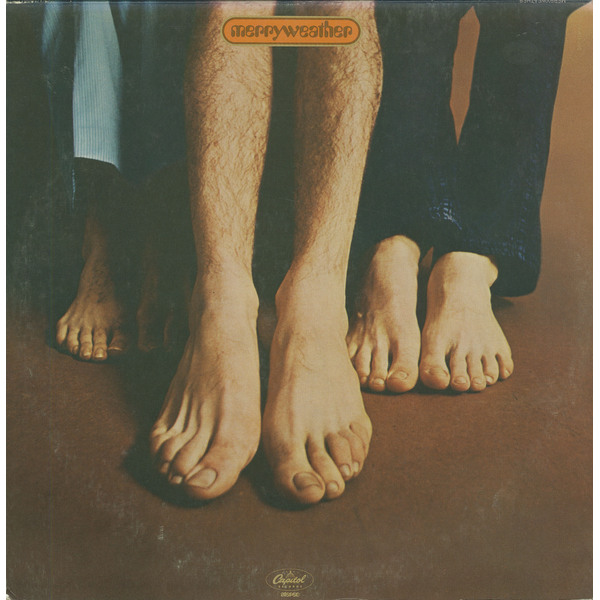
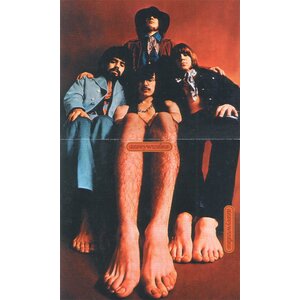
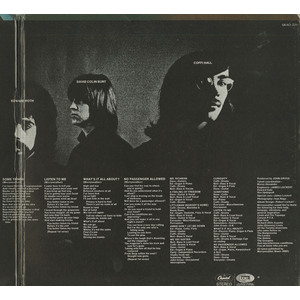
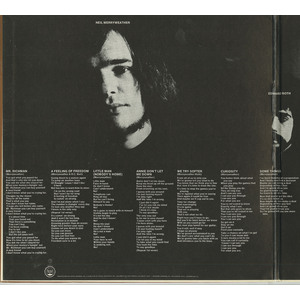
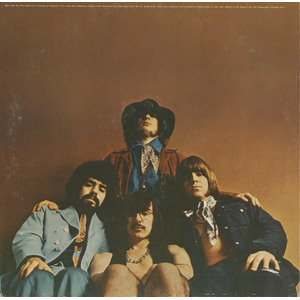


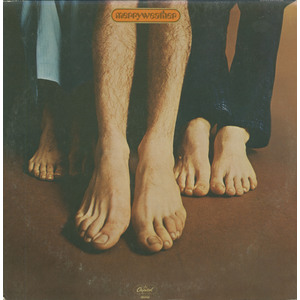
No Comments